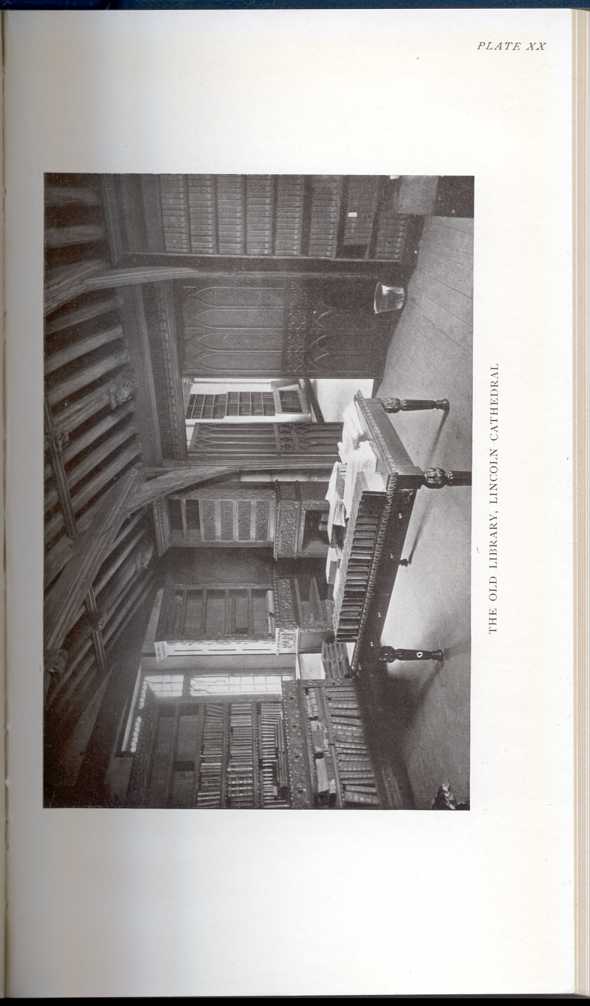| CHAPTER V: CATHEDRAL AND CHURCH LIBRARIES Old English libraries; the making, collection and use of books during the middle ages | ||
5. § V
Books were given to Lincoln Cathedral about 1150 by Hugh of
Leicester; one of them bears the inscription, Ex dono Hugonis
Archidiaconi Leycestriae. They may still be seen at Lincoln.
Forty-two volumes and a map came into the charge of Hamo when he became
chancellor in 1150.[5.27] During his
chancellorship thirty-one volumes were added by gift, so making the
total seventy-three volumes: Bishops Alexander and Chesney were among
the benefactors. But here, as at
 [Description: THE OLD LIBRARY, LINCOLN
CATHEDRAL]
[Description: THE OLD LIBRARY, LINCOLN
CATHEDRAL]
119
| CHAPTER V: CATHEDRAL AND CHURCH LIBRARIES Old English libraries; the making, collection and use of books during the middle ages | ||